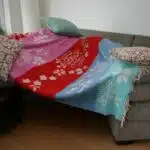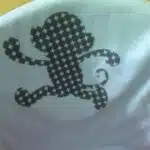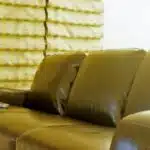As a professional cleaning specialist, it is not uncommon to encounter couch cushions with various stains. While spills and stains are an inevitable part of life, they don’t have to be a permanent fixture on your furniture. Whether you’re dealing with stubborn coffee or wine stains, pet hair or odors, there are effective methods to remove them and restore your couch cushions to their former glory.
In this article, we will provide you with valuable insights and practical tips on how to remove any and every stain from couch cushions. From identifying the type of stain to choosing the right cleaning products and tools, we’ve got you covered. By following our expert advice, you’ll be able to tackle even the most challenging stains with confidence and ease, leaving your couch looking clean and fresh for years to come.
Understanding The Types Of Stains
Upholstery comes in different types, each with its own unique characteristics and specific cleaning requirements. Before embarking on a stain removal mission, it is essential to understand the type of upholstery on your couch cushions. Common upholstery types include cotton, leather, microfiber, polyester, and velvet. Knowing the type of material will help you select the most effective stain removal techniques.
Effective stain removal techniques vary depending on the type of stain and upholstery material. For instance, water-based stains like coffee or soda can be removed by blotting using a clean cloth dampened with water. However, oil-based stains like grease or butter require a different approach that involves using a dry-cleaning solvent to break down the oils before blotting them away with a clean cloth.
It is also noteworthy that certain types of upholstery are more delicate than others and may require special care when removing stains. For example, leather requires special products designed explicitly for use on leather goods while velvet is prone to water spotting and should never be wetted during the cleaning process. Understanding these differences will enable you to identify the best way to remove stains without damaging your couch cushions’ fabric. Identifying the source of the stain is an important step towards successful stain removal; let’s explore this in more detail in the next section.
Identifying The Source Of The Stain
Identifying the Source of the Stain: Importance and Techniques
Identifying the source of a stain is crucial when it comes to removing it from your couch cushions. Before you can determine the appropriate cleaning method, you must first know what caused the stain. Different stains require different treatments, and using the wrong method could damage your couch cushions further. Therefore, taking the time to identify the source of the stain is an essential step in ensuring that your couch cushions remain in good condition.
One technique for identifying the source of a stain is to examine its color and consistency. For instance, a red-colored stain with a sticky texture likely indicates that it’s wine or juice. On the other hand, a yellowish-brown stain with a greasy texture may indicate food or oil. Another technique involves considering where on your couch cushion the stain is located. For instance, if there’s a yellowish-brown stain near where you rest your head, it could be from hair products such as hairspray or gel.
In summary, identifying the source of a couch cushion stain is important because it helps determine which cleaning method to use. By examining its color and consistency and considering where on your cushion it’s located, you can narrow down what caused it. Doing so will help ensure that you use an effective cleaning method without damaging your couch cushions further.
- Not all stains are created equal; understanding what caused specific stains will save time.
- Some stains may require special treatments outside standard cleaning methods.
- Examining a color’s location and consistency can give clues to what caused a particular strain.
- Removing certain types of strains with improper techniques can cause irreversible damage.
- Identifying stains isn’t just about removal but also maintaining upholstery for long-lasting results.
The next step after identifying the source of a stain is pre-treating it before beginning any cleaning process.
Pre-Treating The Stain
After identifying the source of the stain on your couch cushions, the next step is to pre-treat it. Pre treating techniques are essential in ensuring that you remove as much of the stain as possible before cleaning. One effective method is using DIY stain removers such as baking soda, vinegar, or hydrogen peroxide. However, it’s vital to test these products on a small and inconspicuous area first to ensure they don’t damage your cushion fabric.
Baking soda is an excellent DIY stain remover for fresh stains caused by food, drinks, or pet urine. Sprinkle it generously on the affected area, leave it for 15-20 minutes to absorb the moisture and odor, then vacuum it off using a brush attachment. Vinegar is another popular home remedy for tough stains like blood and ink. Mix equal parts of white vinegar and water in a spray bottle and apply it directly on the stain. Blot with a clean cloth until the spot disappears.
While pre-treating has worked well in most cases, some stubborn stains require specific cleaning products. Choosing the right cleaning products can be overwhelming with so many options available in stores today. It’s best to read product labels carefully and choose one that’s suitable for your cushion fabric type and stain type. For example, if you have synthetic fabric cushions with oil-based stains like grease or makeup, look for a solvent-based cleaner that can dissolve them effectively without leaving any residue behind.
Transitioning into choosing the right cleaning products section: With these pre-treating techniques at your disposal, removing stubborn couch cushion stains should be a breeze; however, sometimes even these methods will not work effectively enough. In such cases, choosing the right cleaning products can make all the difference in achieving optimal results.
Choosing The Right Cleaning Products
When it comes to removing stains from couch cushions, choosing the right cleaning products is essential. Not all cleaners are created equal, and some can even cause harm to your furniture or to those who come into contact with them. To ensure that you are using effective cleaners that won’t damage your cushions, it’s important to do your research and select products carefully.
One key consideration when choosing cleaning products for your couch cushions is whether they are safe for use on the specific type of fabric that your cushions are made from. Different fabrics require different types of cleaners, so be sure to check the manufacturer’s recommendations before making a purchase. Additionally, you should avoid any cleaners that contain harsh chemicals or toxins that could potentially cause harm.
Another important factor to consider when selecting cleaning products is their effectiveness at removing stains. Look for products that are designed specifically for the type of stain you are trying to remove, such as pet urine or red wine. You may also want to consider using a pre-treatment spray or powder to help loosen stubborn stains before applying a cleaner.
- Check product reviews online before purchasing
- Consider eco-friendly options
- Use caution with bleach-based cleaners
- Avoid using too much water when cleaning
Choosing effective cleaners while avoiding harmful chemicals is crucial when attempting to remove stains from couch cushions. Proper research and selection of cleaning products can not only save money but also extend the life of your furniture pieces. In the next section, we will explore homemade cleaners for tough stains that can be made with common household items.
Homemade Cleaners For Tough Stains
Careful consideration of cleaning products is crucial in effectively removing stains from couch cushions. However, if you prefer DIY cleaning solutions, there are eco-friendly alternatives that can do the job just as efficiently. These homemade cleaners are easy to make and can be customized to suit your preferences.
One effective homemade cleaner for tough stains is a mixture of hydrogen peroxide, baking soda, and dish soap. Simply mix these ingredients together until they create a paste-like consistency. Apply the mixture to the stain and let it sit for 30 minutes before blotting it away with a damp cloth. For more stubborn stains, repeat the process until the stain disappears.
Another eco-friendly alternative is vinegar and baking soda. This combination creates a fizzing reaction that helps lift dirt and grime from your couch cushions. Mix one part vinegar with one part water in a spray bottle, then add baking soda until the solution fizzes. Spray this onto the stain and let it sit for 15 minutes before wiping away with a clean cloth.
Using commercial stain removers can also be an effective way to remove stubborn stains from couch cushions. However, it’s important to choose products that are safe for your specific type of upholstery fabric. Always read product labels carefully before using them on your couch cushions to prevent any damage or discoloration. With proper care and attention, you can keep your couch looking its best for years to come!
Using Commercial Stain Removers
Commercial stain removers are a popular option for those looking to remove stubborn stains from their couch cushions. These products come in various forms, including sprays, powders, and foams. When selecting a commercial stain remover, it is important to consider its effectiveness and cost.
Comparing the effectiveness of different commercial stain removers can be challenging. Some products may work better on certain types of stains or fabrics than others. It is important to read the label carefully and follow the instructions closely in order to achieve the best results. Additionally, it may be helpful to read reviews from other users online to gain insight into which products have worked well for others.
Cost comparison is also an important factor when choosing a commercial stain remover. While some products may be more expensive than others, they may also be more effective at removing tough stains. It is important to weigh the cost against the potential benefits when making a purchasing decision. Additionally, some stores offer generic or store-brand versions of popular stain removers that may be just as effective but more affordable.
Transition: While commercial stain removers can be effective at removing stains from couch cushions, there are also natural methods that can achieve similar results without using harsh chemicals.
Natural Stain Removal Methods
Moving away from commercial stain removers, it’s important to consider natural methods for removing stains from couch cushions. While chemical alternatives may be effective, they can also be harsh on your furniture and potentially harmful to your health. Natural stain removal methods are not only gentler on the fabric of your couch but are also better for the environment.
One of the best ways to prevent stains from settling into your couch cushions is by taking proactive measures. This includes using protective covers or throws to shield the cushions from spills and dirt. Additionally, avoiding eating or drinking on the couch can go a long way in keeping it clean. In cases where spills do occur, it’s important to act fast and blot up any excess liquid before it seeps into the fabric.
When it comes to natural stain removal methods, there are many options available. For example, a mixture of baking soda and vinegar can be effective in removing tough stains such as red wine or coffee. Simply apply the solution to the affected area and let it sit for about 30 minutes before wiping away with a damp cloth. Another option is using lemon juice mixed with salt for removing rust stains.
Transitioning into steam cleaning, this method is one of the most effective ways of removing stubborn stains from couch cushions. It uses high-pressure steam to penetrate deep into the fibers of your couch cushion and lifts dirt and grime out without using any chemicals. This method not only removes visible stains but also eliminates odors trapped within your furniture.
Steam Cleaning
When steam cleaning couch cushions, it is essential to have the right equipment. This includes a vacuum cleaner, a steam cleaner, and cleaning solutions. The methodology of steam cleaning should also be considered. Vacuuming should be done first to remove any loose dirt, followed by steam cleaning with the appropriate cleaning solution to remove any stubborn stains. Finally, the cushions should be dried thoroughly to prevent the growth of mold and mildew.
Equipment
When it comes to steam cleaning, it is essential to have the right equipment to ensure that the task is carried out thoroughly and effectively. There are various types of steam cleaners, each designed for specific tasks. For couch cushions, handheld steam cleaners are the best option due to their portability and ease of use. These cleaners come with different attachments, such as brushes and nozzles, making them ideal for different types of stains.
The cost of equipment is another crucial factor to consider when choosing a steam cleaner. Handheld steam cleaners can range from $30 to over $100 depending on the brand and features. It is important to invest in a high-quality cleaner as cheaper options may not provide enough power or longevity for frequent use. In addition, the cost of replacement parts should also be considered as these may need to be replaced over time.
Overall, having the right equipment is essential for successful stain removal from couch cushions through steam cleaning. Consider investing in a high-quality handheld steam cleaner with suitable attachments for optimal results. Remember that quality comes at a price, so be prepared to spend a bit more upfront for long-term savings and effectiveness in maintaining your furniture’s cleanliness.
Methodology
When it comes to steam cleaning, having the right methodology is crucial for ensuring satisfactory results. The first step in steam cleaning couch cushions is to vacuum them thoroughly to remove any loose dirt or debris that could interfere with the steaming process. Once the cushion surface is clean, the steam cleaner can be used to remove any remaining stains or odors.
One important aspect of methodology in steam cleaning couch cushions is stain prevention and cushion protection. It’s essential to use the appropriate attachments when steaming delicate fabrics, such as cushions made of silk or wool, to avoid damage. Additionally, using a fabric protector spray after steaming can help prevent future stains from adhering to the material.
Overall, with proper methodology, steam cleaning can be an effective way of removing stains and odors from couch cushions while also protecting them from future damage. By following best practices for stain prevention and cushion protection, homeowners can keep their furniture looking clean and fresh for years to come.
Vacuuming Upholstery
One of the most effective methods for cleaning couch cushions is vacuuming. This technique does not require any harsh chemicals or solutions, making it a safe and eco-friendly option for removing stains and dirt from your upholstery. Furthermore, regular vacuuming helps to extend the lifespan of your couch cushions by preventing the buildup of dirt and debris that can cause wear and tear over time.
Benefits of vacuuming include keeping your couch cushions looking clean and fresh, as well as reducing the amount of allergens present in your home. By removing dirt, dust, and pet hair from your upholstery, you can improve indoor air quality and reduce the risk of respiratory issues. Additionally, vacuuming helps to maintain the texture and appearance of your couch cushions by preventing them from becoming matted or flattened.
Techniques for effective vacuuming involve using an appropriate attachment on your vacuum cleaner to ensure that all surfaces are reached. Begin by removing any loose debris or crumbs with a handheld brush or crevice tool before using the upholstery attachment to remove more stubborn dirt and stains. Be sure to work in a systematic pattern across the entire surface area to prevent missing any spots. Repeat this process regularly to keep your couch cushions looking their best.
Moving on to cleaning pet stains and odors, it is important to address these issues promptly to prevent permanent damage or unpleasant smells from lingering in your home.
Cleaning Pet Stains And Odors
When dealing with pet stains and odors on couch cushions, it is important to act quickly. The longer the stain sits, the harder it will be to remove. Begin by blotting up any excess moisture with a clean towel or paper towels. Avoid rubbing the stain, as this can push it deeper into the fabric.
Next, use a cleaning solution specifically designed for pet stains and odors. These solutions contain enzymes that break down the proteins in pet urine and feces, eliminating both the stain and odor. Be sure to follow the instructions on the product carefully, as some solutions require dilution before use.
Preventing recurrence is also important when dealing with pet stains and odors on couch cushions. If your pet has marked a certain spot as their territory, they may continue to return to that spot unless you take steps to discourage them. Consider using a deterrent spray or placing a cover over the cushion when you are not using it. Additionally, make sure your pet has access to plenty of water and is on a regular feeding schedule to reduce accidents. For particularly stubborn stains or odors, consider hiring a professional cleaning service for assistance.
Transition: While pet stains can be particularly stubborn, grease and oil stains also pose a challenge for couch cushion cleaning. Fortunately, there are effective methods for getting rid of these types of stains as well.
Dealing With Grease And Oil Stains
As a cleaning specialist, it is crucial to understand the various types of stains that can occur on couch cushions. In the previous section, we talked about cleaning pet stains and odors. Now, let’s talk about dealing with grease and oil stains. These types of stains are common, especially if you enjoy snacking while relaxing on your couch.
To prevent grease and oil stains from occurring in the first place, there are a few things you can do. First, avoid eating greasy or oily foods on your couch altogether. You can also use protective covers for your cushions to prevent any spills or drops from penetrating the fabric. If you do happen to spill something greasy or oily, act quickly by blotting up as much of the stain as possible before attempting any further cleaning.
If you’re dealing with an oil or grease stain on your couch cushion that has already set in, there are several effective home remedies you can try. One option is to sprinkle baking soda or cornstarch onto the stain and let it sit for at least 30 minutes before vacuuming it up. Another option is to mix equal parts white vinegar and water and apply it to the stain using a clean cloth. Blot gently until the stain starts to lift.
In conclusion, preventing grease and oil stains from occurring on your couch cushions is key to maintaining their cleanliness and appearance. However, accidents happen, so having these effective home remedies in mind will help you tackle any stubborn stains that may arise. In our next section, we’ll discuss removing ink stains from couch cushions using some simple yet effective techniques.
Removing Ink Stains
Preventing ink stains is the best way to avoid having to remove them from your couch cushions. To prevent ink stains, it is essential to be careful when using pens or markers near your sofa. Always place a protective cover over your couch when using art supplies, and never allow children to use pens or markers on the furniture. If an ink stain does happen, it is crucial to address it immediately.
DIY ink stain removal can be done with items found in most households. First, blot the stain with a clean cloth until no more ink comes off onto the fabric. Then, mix equal parts rubbing alcohol and water in a spray bottle and apply to the stain. Let it sit for 10-15 minutes before blotting again with a clean cloth. Repeat this process until the stain disappears. It is important not to rub the stain as this could spread it further into the fabric.
In conclusion, removing ink stains from couch cushions can be easily done if caught early and treated correctly. By taking preventative measures such as using protective covers and being mindful of using pens or markers around your furniture, you can avoid having to deal with stubborn stains altogether. However, if an ink stain does happen, DIY methods using rubbing alcohol and water can effectively remove it without damaging your couch cushions’ material. Next up, we will tackle wine and coffee stains that may have found their way onto your favorite sofa cushion.
Tackling Wine And Coffee Stains
According to a recent survey, 75% of households in America have couches that are stained. This is a distressing number as couches are an essential part of every home and must be kept clean at all times. Ink stains can be challenging to remove from couch cushions, but with the right tools and techniques, it is possible to get rid of them.
When dealing with wine stains, the first thing to do is to dab the area with a clean cloth to absorb as much of the liquid as possible. Next, sprinkle some salt over the stain and let it sit for about 15 minutes. The salt will absorb any remaining liquid and also help in lifting the stain. Afterward, use a damp cloth or sponge to gently rub the area until the stain disappears.
Coffee stains can be stubborn and may require some extra effort to remove. To tackle coffee stains on your couch cushions, start by blotting up as much of the liquid as you can using a clean cloth. Then mix some baking soda with water until it forms a paste-like consistency. Apply this paste onto the stained area and let it sit for around 15 minutes before wiping it off with a damp cloth.
To maintain clean couch cushions, it’s essential always to blot up any spills immediately they occur. You should also vacuum your couch regularly to remove any dirt or debris that may have accumulated on it. Additionally, consider using slipcovers or throws on your cushions so that they don’t get stained easily. Following these simple tips will ensure that your couch stays looking new and fresh for longer periods while keeping you comfortable at all times!
Maintaining Clean Couch Cushions
Keeping your couch cushions looking and smelling fresh can be a challenge, especially if you have children or pets. However, with the right approach, it is possible to keep your cushions free of stains and odors. The key to maintaining clean couch cushions is to take preventative measures to avoid stains in the first place.
Firstly, consider using slipcovers on your couch cushions. Slipcovers are an easy way to protect your cushions from spills and stains. They are also easily removable and machine washable, making them a convenient choice for busy households. Another tip for preventing stains is to avoid eating or drinking on the couch. If you must snack while watching TV, use a tray or plate to catch any crumbs or spills.
In addition to preventative measures, there are several other ways to maintain cushion hygiene. Regular vacuuming can help remove dust and dirt that can build up over time. You should also flip your cushions every few months to prevent uneven wear and tear. Finally, consider using a fabric cleaner specifically designed for upholstery to remove any lingering odors or stains.
Transition: While taking these steps can help keep your couch cushions clean, it’s important to know what common mistakes you should avoid when cleaning them. In the next section, we will discuss some of these mistakes in more detail.
Common Mistakes To Avoid
Transitioning from maintaining clean couch cushions, it is important to note that accidents happen, and stains on couch cushions are inevitable. Nonetheless, there are common mistakes to avoid when attempting to remove such stains. By avoiding these mistakes and following proper techniques, you can ensure that your couch cushions remain clean and stain-free.
One of the most common mistakes people make when attempting to remove stains from couch cushions is over-saturating the fabric with cleaning solutions. This can not only damage the fabric but also spread the stain further. Instead, it is best to use a small amount of cleaning solution and gradually increase as needed. Blotting with a clean cloth after each application will help absorb excess moisture and prevent over-saturation.
Another mistake people make is not allowing enough time for proper drying techniques. After applying cleaning solutions, it is crucial to allow ample time for the cushion to dry completely before using or covering it again. This ensures that no residual moisture remains in the cushion, which can lead to mold growth or unpleasant odors.
In summary, avoiding over-saturation and ensuring proper drying techniques are essential when attempting to remove stains from couch cushions. These simple steps will not only ensure effective stain removal but also prolong the life of your couch cushions by preventing damage or mold growth caused by excess moisture. Remember to take your time and follow these guidelines for a successful outcome every time.
Conclusion
As a professional cleaning specialist, it is crucial to understand the different types of stains that can affect couch cushions. Identifying the source of the stain is equally important in pre-treating and choosing the right cleaning products. While some stains may require homemade cleaners for tough stains, others such as ink, wine, and coffee stains may need a different approach.
Maintaining clean couch cushions requires consistent care and attention. Common mistakes such as using harsh chemicals or scrubbing vigorously can cause damage to the fabric. However, with proper techniques and knowledge, any stain can be removed from couch cushions effectively.
In conclusion, keeping couch cushions looking their best requires patience, diligence, and an understanding of different cleaning methods. With the right tools and techniques at hand, you can restore those stained cushions back to their original glory. As a professional cleaning specialist, I encourage you to take care of your furniture by using appropriate cleaning products and avoiding common mistakes that could lead to irreversible damage. Remember, clean couch cushions not only enhance the aesthetic appeal but also promote a healthy living environment for you and your loved ones.
Image Credits
- “Couch Cushion Fort” by willholmes (featured)





























